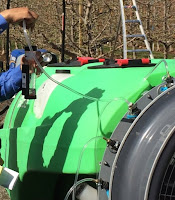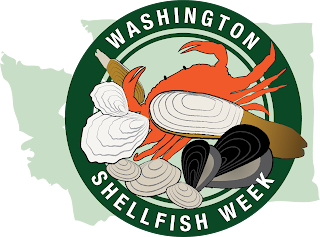WSDA Communications
In May, WSDA’s pest program will begin their project to eradicate gypsy moth populations detected in the Graham and Silverdale areas. Having been in many of the spray areas during the 2016 eradication project, I want to let people who live in or near one of the 2018 gypsy moth treatment areas what they can expect this year.
The day before treatments
Treatments are highly dependent on the weather, so WSDA usually makes the decision to spray about 24 hours in advance. If you have signed up for treatment notifications, you will receive an email, text, or robocall the day before treatments begin. We also post notice of pending treatments on WSDA’s Facebook and Twitter
accounts.
The product used to treat for gypsy moth is Foray 48B. The active ingredient is Btk – a soil bacteria. Foray 48B is approved for use on organic food crops.
People who live in areas to be treated may want to close their windows, bring in outside toys, or cover their cars. Foray 48B is sticky, so bring in or cover outdoor items to prevent the need to wash them off after the treatments.
 |
| Cover or put your car in a garage to avoid having to clean Btk off of your car. It is sticky. |
Treatment day
 |
| Airplane applying Btk - a soil bacteria - during 2016 gypsy moth eradication |
Treatments will be conducted by airplane. The plane is red and white. It will fly over the treatment area at a relatively low altitude – about 250 feet above the ground. You may hear the airplane but I'm happy to say that it is much quieter than a helicopter, which WSDA has used for these treatments in the past.
The plane will make several passes over each treatment area until the entire area has been covered. The plane has guidance systems and GPS to make sure that it is on target. The release of the Btk automatically starts when the plane enters the treatment area and stops when the plane leaves, ensuring that only the target area is treated.
The spray comes out in a very fine mist. It is so fine, in fact, that if you are outside when the Btk is applied you will not even feel the spray. I didn't and neither did the other WSDA employees in the treatment areas in 2016. You will notice an odor in the air; it has a bit of an earthy scent to it.
Even as safe as Btk is, if you believe you have had some reaction to the spray, you should see your doctor and/or report it to the Department of Health at 1-877-485-7316.
After treatments
 |
| Fine mist of Btk left on gypsy moth sample during treatment |
Because the gypsy moth caterpillars emerge over a period of about two weeks and Btk breaks down quickly in the environment, each site will be treated at least three times, with 3-14 days between treatments depending on the weather. You can expect the same pre- and post-treatment notification each time.
Summer trapping
After all gypsy moth caterpillar spraying is complete for the year, the next step will be to conduct intensive trapping for two years. This confirms the success of the eradication project. So you will likely see our traps in trees in your neighborhood or along a road. Please do not disturb them.
 |
| Gypsy moth caterpillars defoliated this forest in 2016 |
If you have any questions about the eradication project or our gypsy moth program, you can visit our website at agr.wa.gov/gypsymoth or call our gypsy moth hotline at 1-800-443-6684.













